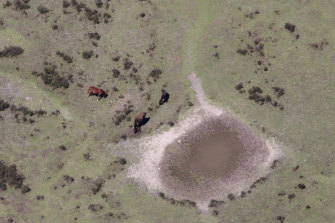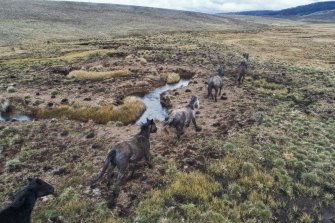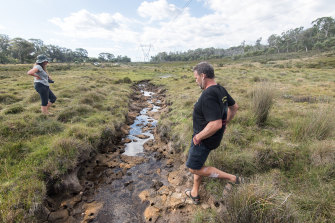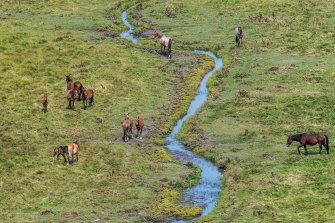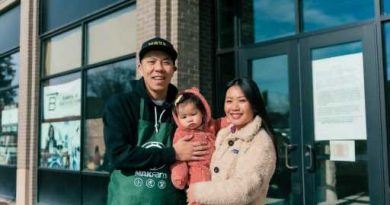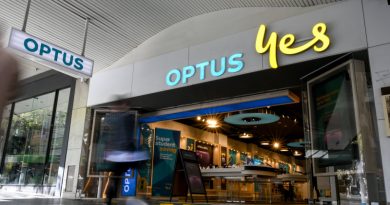Wild horse culls to go ahead in Alpine National Park
Feral horses in Victoria’s high country will be trapped and culled to tackle the soaring number of brumbies trampling unique alpine ecosystems under a long-delayed plan by the state government’s parks service.
Scientists have welcomed the Parks Victoria 10-year plan, which was held up by court action. In 2019 the Australian Brumby Alliance took Parks Victoria to court to prevent it from trapping, removing or “otherwise interfering” with feral horses from the Bogong High Plains and Alpine National Park.
Horses at Native Dog Flat in the Alpine National Park.
The alliance argued brumbies were part of the cultural heritage of the Australian Alps, and wanted their removal referred to the federal Environment Minister, but the court judge ruled the government’s approach was appropriate.
Parks Victoria will use professional shooters to remove horses in ecologically sensitive areas, and also trap horses for rehoming – if homes can be found – the 10-year plan says. Horses will be removed entirely from the Bogong High Plains and significantly reduced in the eastern Alps region.
There was very low interest and uptake from the community in feral horse rehoming, despite repeated advertising and direct approaches by Parks Victoria calling for expressions of interest, the report says.
Feral horses are causing serious long-term damage to alpine and floodplain environments, and their population is rapidly increasing, the plan says. “Urgent action is required to halt the dramatic escalation in the feral horse population and rate of ecosystem decline,” it says.
Feral horses at the waterways along the Eucumbene River north of Kiandra.Credit:Nick Moir
This damage includes destroying habitat critical to many threatened plant and animal species, such as alpine skinks and spiny crayfish, and disturbing waterways and fragile vegetation.
Don Driscoll, an ecologist from Deakin University, said it was an evidence-based approach that would effectively reduce horse numbers.
“There are a whole range of species that only occur in our alpine areas and have very restricted distribution. In contrast, horses occur across most of Australia,” Professor Driscoll said.
“The rare species that occur here are in the only environment that is suitable for them, so we really need to look after these species in place.”
An alpine sphagnum bog that has been damaged by feral horses at the head waters of the Murrumbidgee River in the Kosciuszko national park.Credit:Justin McManus
The 2019 Australian Alps aerial feral horse survey found horse numbers in the Victorian section of the Australian alps had doubled in the five-year period from 2014 to 2019, from about 2300 to about 5000.
Victorian National Parks Association spokesman Phil Ingamells said leaving domestic horses in the high country was not kind to them because they suffered during drought and bushfires.
“Parks Victoria’s plan to control feral horses is backed up by many decades of alpine science, and the integrity and depth of those studies have been recognised by Australia’s Federal Court,” he said.
The Australian Brumby Alliance accused Parks Victoria of operating under a “code of secrecy” and using flawed information to justify its “killing campaigns”.
Horses near the headwater for the Murrumbidgee River in Currango Plain in Kosciuszko National Park.Credit:Justin McManus
Alliance spokesperson Jill Pickering said: “The ABA has long been advocating for Parks Victoria to work with brumby support agencies to find humane and long-lasting rehoming options for the brumbies.”
In NSW, the Kosciuszko National Park wild horse management plan proposes to remove or cull about 9000 wild horses over six years.
The latest government figures put the estimated number of brumbies in Kosciuszko National Park at 14,380, which experts say is far too many for the sensitive alpine ecosystem.
Invasive Species Council conservation director James Trezise said the NSW approach would retain a large population of feral horses in Kosciuszko, including along the Victorian border.
“This is simply exporting the problem south and is a major concern,” Mr Trezise said.
Fascinating answers to perplexing questions delivered to your inbox every week. Sign up to get our new Explainer newsletter here.
Most Viewed in National
From our partners
Source: Read Full Article

